Cagliari pays homage to its Warrior Saint
more than a year agoFor long centuries, Cagliari has on May Day mixed, some say confused, religious devotion with secular display; liturgy with folklore; mirth with solemnity. There is something for everyone here.
So how did all this come about? Ephysius, possibly a Syrian by birth, enters recorded history as an officer in the Praetorian Guard of the emperor Diocletian (245-313 AD). He had been sent to southern Sardinia as part of a punitive expedition to suppress a local rebellion. While here, he converted to Christianity (then an outlawed religion). When he refused to recant, he was arrested, tortured and beheaded at Nora, twenty-odd miles along the coast to the south west of Cagliari.
Time passed but Sant’Efis (as he is known locally) was not forgotten. In 1102, a pretty Romanesque church was completed and dedicated to him at Nora, on the site of his martyrdom. More time slipped by until in the early 1650s the plague arrived in Cagliari, soon decimating the city. Probably 12,000 died out of a total population of 20,000. At its height, when the plague was claiming 200 lives every day, the Chief Municipal Magistrate vowed before the reliquary of St Ephysius, which was exposed in the Cathedral, that if the deaths were to cease, the city authorities would honour the Saint ever after with a solemn procession every year from Cagliari to Nora and back. The deaths did cease. In 1657, the first procession took place, and has done every year since, except in 1917 when, according to the local authorities, “the international situation precludes such public displays”. In 1943, when Anglo-American bombing had reduced much of Cagliari to mounds of rubble, the Saint was transported on the back of a milk van. The renewal of this annual vow is at the core of Cagliari’s May Day festivities.
St Ephysius continued to provide his protection. For example in 1793, with a French fleet poised to invade Cagliari, his statue was carried down to the port to stave off the enemy ships. In that gelid but previously serene January storms appeared out of nowhere. Freak winds thrashed the waters of the Gulf of Angels. The French armada faltered, though it continued to shell the city and its approaches, even attempting to disembark ground troops which were soon repulsed and dispersed in the proximity of Poetto Beach. In the meanwhile, the seas became ever more violent and admiral Truguet’s attempt to invade the capital of the Kingdom of Sardinia floundered. Those haphazard and largely ineffective French cannonades are commemorated with a nice touch of irony. Framing a plaque recording St Ephysius’s miraculous intervention is a neatly-laid series of cannon balls. This is to be found in the little 1780s Piedmontese baroque church dedicated to the Saint, where his reliquary is housed and where the Confraternity bearing his name has its headquarters.
The 1st of May in old Cagliari is a magical day. Not only does the past mingle with and condition the present. The past becomes the present; but also the present becomes the past. What actually happens on the great day (when, incidentally, it often rains but never after the Saint has joined his procession)?
The procession has three starting-points, two identities, one destination. Depending upon one’s preferences - equestrian, sartorial, devotional/religious - there are various vantage points where visitors can position themselves. If, however, you have no particular priorities, then look out for a seat on one of the grandstands that line piazza del Carmine, corso Vittorio Emanuele II or largo Carlo Felice: from there you will see how everything melds perfectly.
That said, for horses go to viale Sant’Ignazio corner with via Don Bosco. There, numerous groups of horsemen in traditional costumes gather and mount up. These riders - skilled, proud, competitive - constitute the first phase of the St Ephysius’s Day Procession and are the representatives of those Sardinian towns and villages where anything to do with horses remains a significant part of life. These centaurs in their gaiters, boots, corduroy breeches and billowing white shirts provide a sort of advance guard for the Saint. Bits champing, hooves sliding, saddles creaking, jockeys jockeying, they are a glorious sight; denizens from an earlier ordering of society.
Following them come the womenfolk, children and older men, either riding on ox-drawn carts - traccas - or on foot, carrying the banners displaying the name of their village. Riding high on their swaying, flower-garlanded traccas, in a kaleidoscope of fabulous embroidery, wide pleated skirts and heavy gold earrings, these exquisite women and girls receive the applause of the crowds with haughty though occasionally complicit smiles. And the greybeards plodding alongside the carts nod contentedly - their wives, daughters, nieces… whatever are doing them proud, St Ephysius will be pleased too!
Meanwhile in the Stampace quarter, inside the church of St Ephysius and in its adjoining fenced forecourt there has been much going on. The mid-morning mass has already been celebrated; the members of the Confraternity have vested in either the blue and grey monkish habits or top hats and tail coats which this year their roles require. Soon the Saint’s coach will be leaving; already the team of massive Nora-bred oxen have been backed up to the church doors. Just time, perhaps, for a quick cigarette and a visit to the loo. Being here on the big day is like being back stage on a first night!
There are horses here too, quieter mounts generally, held in readiness for the various officers and officials who will be escorting the Saint down the hill, first as far as the Town Hall in via Roma and then on to distant Nora.
When at noon (often up to an hour later) St Ephysius’s trembling glass and gold carriage is at last manoeuvred out of the little forecourt and begins its journey, with a bevy of magenta-vested clergy trudging in its wake, the guards soon assume their positions. First rides the Third Guardian bearing aloft the Confraternity’s banner. Elected annually, he rides ahead of the Alter Nos who represents the municipal authorities - hence the Italian mayoral tricolour sash, which he wears round his waist. The Alter Nos is escorted by a half-squadron of militiamen in red tunics, also on horseback. They carry sabres and blunderbusses, symbols of a more gruesome past when it had been necessary to defend the Saint’s procession from the Saracen and Barbary pirates who frequently raided the coast road from Cagliari to Nora.
The final scenes for the average visitor to the St Ephysius’s Day procession are played out over the flower-strewn stretch of via Roma, below the velvet-draped grandstand which is erected in front of the Town Hall. Here the Prefect, the Mayor, the Archbishop and their guests have sat watching all morning as the riders, traccas and folk groups have clattered, swayed and strolled past. Now, as the Saint’s coach draws level, they rise and bow, the Archbishop raising a benedictory arm. The Alter Nos doffs his top hat in reply. And as these final rituals are performed, church bells ring out over the city and the ships in port or at anchor in the gulf blast their horns and hooters. St Ephysius has notched up another victory.
Time for lunch, and make sure you’ve booked! Cagliari’s restaurants and trattorias are never busier than they are today.
To buy tickets, click www.boxofficesardegna.it.


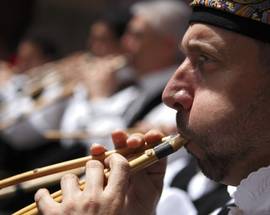
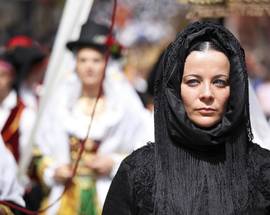
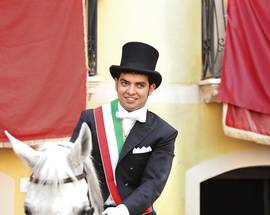
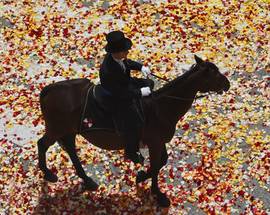
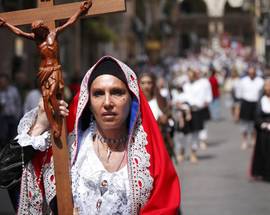
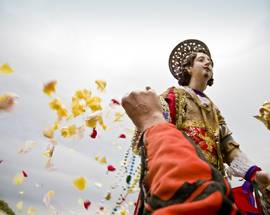
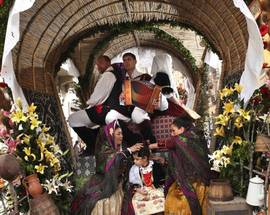
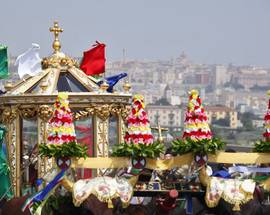
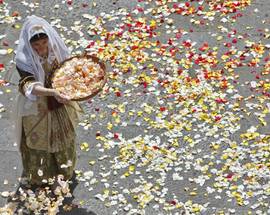
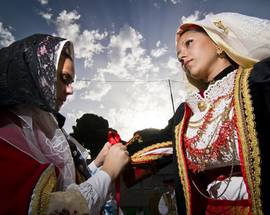
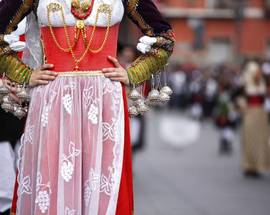
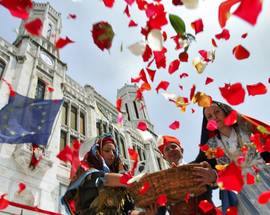
Comments